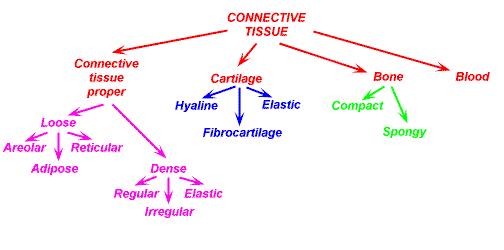Connective Tissue: Structure and Functions
Connective tissue is a type of tissue found in many organisms, including humans, that provides support and structure to the body. It is a complex tissue that is composed of cells, extracellular matrix, and fibers. Connective tissue is found in many different parts of the body, including the skin, bones, tendons, and ligaments.
The extracellular matrix of connective tissue is composed of a variety of macromolecules, including collagen, elastin, and glycosaminoglycans. Collagen fibers provide strength and support, while elastin fibers provide elasticity and resilience. Glycosaminoglycans provide hydration and shock absorption.
There are several different types of connective tissue, each with unique properties and functions. These include loose connective tissue, dense connective tissue, adipose tissue, and cartilage.
Loose connective tissue, also known as areolar tissue, is found in many parts of the body, including the skin and submucosal tissues. It provides support and helps to hold organs in place.

Dense connective tissue, also known as dense regular tissue, is found in tendons and ligaments. It provides strength and stability to joints.
Adipose tissue, also known as fat, is a specialized type of connective tissue that stores energy and helps to regulate body temperature.
Cartilage is a type of connective tissue found in the joints and ears. It provides support and cushioning to these structures.
In conclusion, connective tissue is a complex and essential tissue that plays a crucial role in the structure and function of the body. Further research is needed to fully understand the properties and functions of this important tissue.
.png)
.png)




